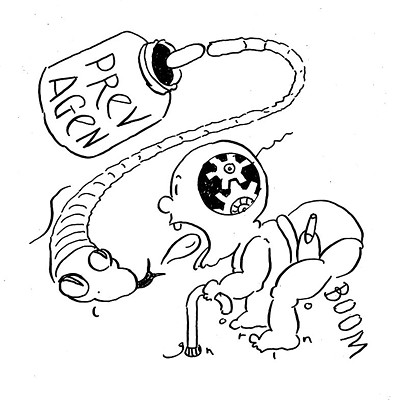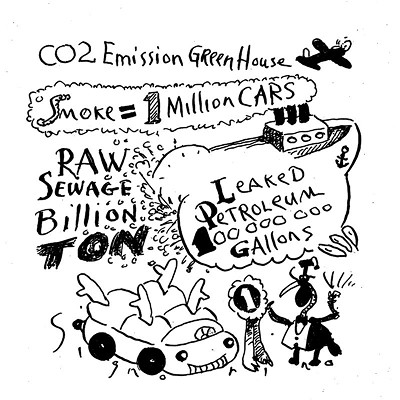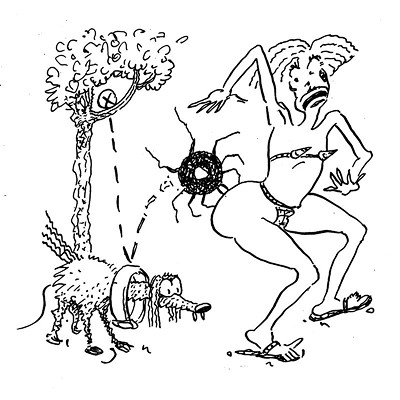Are there really bus-size nuclear reactors all over Europe (especially in France), that can safely power small towns? If so, why don't we have them? -Keith Runfola
If by "bus-size" you mean "not bus-size," and by "all over Europe" you mean "not all over Europe," then sure. Otherwise, no.
You'll appreciate that in my business the first step often isn't coming up with an answer, but rather establishing what combination of misinformation and hallucinogens gave rise to the question. Here I'm guessing you must have heard about France's aggressive nuclear power program and conflated that with a scrambled story propagated by a Web site called Next Energy News.
In 2007, Next Energy broke the story of a 200-kilowatt nuclear reactor "only 20 feet by 6 feet," that "could change everything for small remote communities, small businesses or even a group of neighbors who are fed up with the power companies and want more control over their energy needs." In other words, small-is-beautiful nukes! Accompanying the article was an artist's conception of a Toshiba 4S nuclear reactor. Media outlets that should have known better, such as Business Week, spread the news to the wider world.
Problem was, the Toshiba 4S bears no relationship to Next Energy's description other than being (a) a nuclear reactor and (b) smaller than the battlestar Galactica. My assistant Una surmises that the dimensions, fuel, and other design features of the purported bus-size reactor were taken from a research project sponsored by the Japan Atomic Energy Research Institute to bring nuclear power to the moon-the proposed Japanese mininuke would, in fact, measure about 20 by 6.
True, the 4S reactor unit would be about 8 feet in diameter by 60 feet tall, which is smallish, but that's just the engine, not the whole vehicle, if you follow me. Toshiba is in talks to provide the first 4S (the moniker stands for "super-safe, small, and simple") to the city of Galena, Alaska, population 700. Remote from other towns and accessible only by air and water, Galena currently relies on diesel generators. The 4S can run for 30 years without refueling, and Toshiba may donate the $25 million construction cost. The plant boasts numerous safety features: it can't boil its coolant, it becomes less reactive the hotter it gets, and passive safety systems automatically shut it down when things start to get too Chernobylesque.
Toshiba isn't the only company thinking about baby nukes. Babcock & Wilcox is working on a reactor supposedly a tenth the size of a typical plant. Even smaller nuke designs include one by Hyperion, a sealed unit the size of a hot tub that's buried underground and generates 25,000 kilowatts for seven years. After that you dig it up and replace it. What do you do with the old one? I'll get back to you on that.
But if you want to find some working pint-sized nuclear reactors right now, look no further than the U.S. Navy, which has been running a highly successful program of small, reliable nuclear reactors for decades. A Los Angeles-class attack submarine has a nuclear power package that's 42 feet long by 33 feet in diameter, weighs 1,680 tons, and puts out 26,100 kilowatts.
Don't look for them at Home Depot any time soon, though. The problems with small nukes are the same issues that have hamstrung nuclear power at any scale-security and disposal. Today more than ever you need safeguards to prevent accidents, sabotage, tampering with the reactor to produce plutonium, or just stealing the uranium. Even assuming the Galena nuke clears all regulatory hurdles, it may well be the middle of next decade before they flip the on switch.
Elsewhere, China is planning some small nuclear plants involving "pebble bed reactors," which use uranium encapsulated in billiard-ball-sized pellets to generate heat. Russia is working on barge-mounted nuclear plants scheduled to be operational within three years. The French, however, seem to be more interested in projects at the other end of the scale. They're currently building a European Pressurized Water Reactor, the latest thing in nuclear technology. Capacity: 1.65 billion watts.
























